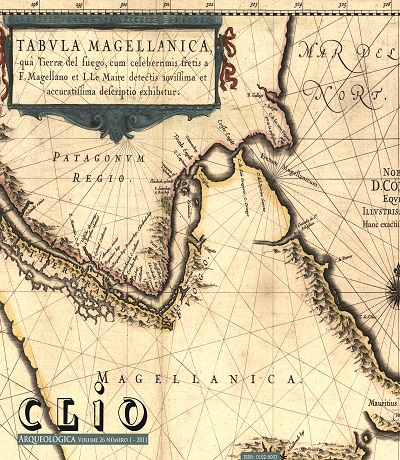ARQUEOLOGIAS DO CORPO E DA SEXUALIDADE: POSSIBILIDADES DE ESTUDOS SOBRE MORTE E GÊNERO NA ARQUEOLOGIA BRASILEIRA
Parole chiave:
Gênero, Sexualidade, Práticas FuneráriasAbstract
Este artigo apresenta as principais perspectivas que vem sendo usadas na arqueologia moderna para o estudo do corpo, gênero e da sexualidade humana, considerando o emprego dos dados mortuários biológicos e culturais. A compreensão dos processos relacionados ao sexo e ao gênero no registro arqueológico é complexa, pois está vinculada ao potencial de análise e interpretação dos contextos de vida de populações do passado. Pelo viés feminista da arqueologia, os estudos bioarqueológicos e em arqueologia da morte têm representado uma perspectiva desde os anos 60 do século XX. O estudo das práticas funerárias representa uma entrada no mundo da sexualidade humana do passado e oferece excelentes possibilidades à arqueologia brasileira no presente. O artigo trata dessas possibilidades de estudo e inclui os conceitos “gênero”, “sexo” e “corpo”, advindos das ciências biológicas, da psicologia e da antropologia.
ABSTRACT
This article presents the major perspectives that have been used in modern archaeology for the study of body, gender and human sexuality, considering the use of biological an cultural mortuary data. Understanding the processes related to sex and gender in the archaeological record is complex because it´s linked to the potential for analysis and interpretation of the life contexts of extinct populations. From this perspective, the bias of feminist archaeology, studies in bioarchaeology and archaeology of death has been a prospect since the 60´s century. The study of burial practices represents an entry into the world of human sexuality in the past and offers great possibilities to the Brazilian archaeology in the present. This text deals with these possibilities of study and includes the concepts of “gender”, “sex” and “body”, coming in the biological, psychological and anthropological sciences.
KEYWORDS: Gender; Sexuality; Mortuary Practices
Riferimenti bibliografici
ADOVASIO, J.M.; SOFFER, O.; PAGE, J. 2009. Sexo invisível: o verdadeiro papel da mulher na pré-história. Rio de Janeiro: Record.
AGARWAL, S. C.; GLENCROSS, B. A. (eds.) 2011. Social Bioarchaeology.Oxford: WileyBlackwell.
ARMELAGOS, G. J. 1998. Introduction: sex, gender and health status in prehistoric and contemporary populations. In. GRAUER, A. L.; STUART-MACADAM, P. (eds.) Sex and Gender in Paleopathological Perspective.Cambridge: Cambridge University Press.
ARNOLD, B. 1996 .Are You a Boy or Are You a Girl? Archaeological Correlates of a Sex and Gender Disjunction in Mortuary Ritual. Michigan: Michigan State University. (paperapresentadona Fourth Gender and Archaeology Conference).
ARNOLD, B.; WICKER, N. L. 2001.Gender and the Archaeology of Death.EUA: AltaMiraPress.
BERROCAL, M. C. 2009. Feminismo, teoría y práctica de una arqueología científica. In: Trabajos de Prehistoria, 66:2, pp. 25-43. Madrid: CSIC.
BUIKSTRA, J.E., UBELAKER, D.H. (eds.). 1994. Standards for Data Collection from Human Skeletal Remains, Proceedings from a Seminar at the Field Museum of Natural History. Arkansas Archaeological Survey Research Series.Fayetteville:Arkansas Archaeological Survey. (44).
CARVALHO, V. C de. 2008. Gênero e Artefato. O sistema Doméstico na perspectiva da cultura material – São Paulo, 1870-1920. São Paulo: Edusp/Fapesp.
CONKEY, M.; SPECTOR, J. 1984.Archaeology and the study of gender. Advances in Archaeological Method and Theory, 7: 1-38.
CRESPO, J. 1990.A História do Corpo. Lisboa: Difel.
DAMM, C. 1991. From burial to gender roles: problems and potentials in post-processual archaeology. In. WALDE, D.; WILLOWS, N. (eds.) The Archaeology of Gender. Calgary: The University of Calgary. p. 130-135.
DARVILL, T. 2008. The Concise Oxford Dictionary of Archaeology.2. ed. New York: Oxford University Press.
DEMBO, A.; IMBELLONI, J. 1933. Deformaciones intencionales del cuerpo humano de carácterétnico. Buenos Aires: JoseAnesi.
DÍAZ-ANDREU, M. 2005. Género y arqueología: una nueva síntesis. In: ROMERO, M. S. (ed.) Arqueología y Género. Granada: Editorial Universidad de Granada. p. 13-51.
GERO, J.; CONKEY, M. 1991.Engendering Archaeology.Women and Prehistory. Oxford: Blackwell.
GODOY, O R de. 1936a. Sobre esqueletos encontrados no prédio da Faculdade de Direito. Archivos de Policia e Identificação. São Paulo: Typ. do Gabinete de Investigações, v.1, p. 57-83.
GODOY, O R de. 1936b. Sobre o esqueleto de um indivíduo assassinado na estrada de rodagem Porto Ferreira. Archivos de Policia e Identificação. São Paulo: Typ. do Gabinete de Investigações. V.1, p. 113-119.
GONZALO, Almudena Hernando. 2007. Sexo, Género y Poder. Breve reflexión sobre algunos conceptos manejados en la arqueología del género. In: RevistaComplutum, v. 18, p.167-174.
GOWLAND, R.; KNÜSEL, C. (eds.) 2009.Social Archaeology of Funerary Remains.Oxford: Oxbow Books.
GRAUER, A. L.; STUART-MACADAM, P. (eds.) 1998. Sex and Gender in Paleopathological Perspective.Cambridge: Cambridge University Press.
HAMILAKIS, Y.; PLUCIENNIK, M.; TARLOW, S. (eds.) 2002.Thinking through the Body.Archaeologies of Corporeality.New York: Kluwer Academic/Plenum Publishers.
HERTZ, R. 1960. A Contribution to the Study of the Collective Representation of Death.In: NEEDHAM, R, NEEDAHM, C (trad). Death and the Right Hand. New York: The Free Press,
HOLLIMON, S. E. 1992. Health Consequences of Sexual Division of Labor Among Native Americans: The Chumash of California and the Arikara of the Northern Plains. In. CLAASSEN, C. (ed.) Exploring Gender Through Archaeology.Monographs in World Archaeology. Madison: Prehistory press. N. 11.
HOLLIMON, S. E. 2000. Sex, Health, and Gender Roles Among the Arikara of the Northern Plains. In. RAUTMAN, A.E. (ed.) Reading the Body: representations and remains in the archaeological record. Philadelphia: University of Pennsylvania Press. p.25-37.
HOLLIMON, S. E. 2011.Sex and Gender in Bioarchaeological Research. Theory, Method, and Interpretation.In. AGARWAL, S. C.; GLENCROSS, B. A. Social Bioarchaeology.Oxford: Willey-Blackwell. Pp. 149-182.
JOYCE, R. A. 2009. Ancient Bodies, Ancient Lives: Sex, Gender, and Archaeology. London: Thames& Hudson.
LESSA, A.; GUIDON, N. 2002. Osteobiographicanalysisofskeleton I Sítio Toca dos Coqueiros, Serra da Capivara National Park, Barzil. FUMDHAMENTOS. V.11,p.99-110.
MARTÍ, Ruth F.LaArqueolgía Del Género: Espacios de mujeres, mujeres com espacio. Cuadernos de Trabajos de Investigación. n. 6. Centro de estudios sobre La mujer, Universidad de Alicante.
MARTIN, G. 2008. A vida espiritual: o culto aos mortos. In: Pré-História do Nordeste do Brasil. Recife: Ed. Universitária da UFPE, p. 307-322.
MATTHEWS, K. 1994. An Archaeology of Homosexuality? Perspectives from the Classical World.In. COTTAM, S.; DUNGWORTH, D.; SCOTT, S.; TAYLOR, J. (eds.) TRAC94.Proceedings of the Fourth Annual Theoretical Roman Archaeology Conference.Durhan.Oxford: Oxford Books. P. 118-132.
MILLER, D.; TILLEY, C. (eds.) 1984.Ideology, Power and Prehistory.Cambridge: Cambridge University Press, p. 51-68.
NASCIMENTO, A. C.; FARIA GRILLO, M. A. (orgs.). 2008. Cultura, Gênero e Infância. Nos Labirintos da História. Recife: Editora da Universidade de Pernambuco.
NELSON, S. M. 2007. Identity and Subsistence: Gender Strategies for Archaeology (Gender and Archaeology). EUA: AltaMira Press.
PETTITT, P. 2011. The Paleolithic Origins of Human Burial.London: Routledge.
RAGO, M. 1998. Descobrindo historicamente o gênero. CadernosPagu, n.11, p. 89-98.
RAUTMAN, A. E. (ed.) 2000. Reading the Body. Representations and Remains in the Archaeological Record. Philadelphia: University of Pennsylvania Press.
RAUTMAN, A. E.; TALALAY, L.E. 2000. Introduction: Diverse Approaches to the Study of Gender in Archaeology. In. RAUTMAN, A. E. (ed.) Reading the Body. Representations and Remains in the Archaeological Record. Philadelphia: University of Pennsylvania Press. p. 1-12.
RUBINSON, K. S. 2008. Are All Warriors Male? Gender Roles on the Ancient Eurasin Steppe (Gender and Archaeology). EUA: AltaMira Press.
SAFFIOTI, Heleieth I. B. 1969. A Mulher na Sociedade de Classes. Mito e realidade. São Paulo: Livraria Quatro Artes.
SAVAGE, S. H. 2000. The status of women in Predynastic Egypt as revealed trough mortuary analysis.In. RAUTMAN, A. E (ed.) Reading the Body: representations and remains in the archaeological record. Philadelphia: University of Pennsylvania Press. p. 77-92.
SCHMIDT, R. A.; VOSS, B. L. (eds.) 2000.Archaeologies of Sexuality.London: Routledge.
SCOTT, Joan. 1990. Gênero: Uma categoria útil de análise histórica. In: Educação & Realidade, Porto Alegre v. 15, n. 2, p. 71-99, jul./dez. Tradução da versão francesa (LesCahiersduGrif, nº 37/38. Paris: EditionsTierce, 1988.) por Guacira Lopes Louro.
SILVA, S F S M da.2005-2006. Terminologias e classificações usadas para descrever sepultamentos humanos: exemplos e sugestões. Revista do Museu de Arqueologia e Etnologia. São Paulo: Universidade de São Paulo. 15-16: 113-138.
SILVA, S. F. S. M. da. 2005. Arqueologia das práticas mortuárias em sítios pré-históricos do litoral do Estado de São Paulo. (Tese de doutorado). São Paulo: MAE-USP.
SILVA, S. F. S. M. da. 2001. Um outro olhar sobre a morte:arqueologia e imagem de enterramentos humanos no catálogo de duas coleções – Tenório e Mar Virado, Ubatuba, São Paulo. (Dissertação de mestrado). São Paulo: MAE/FFLCH-USP.
SOFAER, J. R. 2006.The Body as Material Culture.A Theoretical Osteoarchaeology.1. ed. Cambridge: Cambridge University Press.
SOFAER, J. R. 2009.Gender, Bioarchaeology and Human Ontogeny.In.GOWLAND, R; KNÜSEL, C. (eds.) Social Archaeology of Funerary Remains.Oxford: Oxbow Books. p. 155-167.
SOIHET, Rachel; PEDRO, Joana M. 2007.A emergência da pesquisa da História das mulheres e das relações de gênero. In:Revista Brasileira de História.São Paulo, v. 27, n. 54, p. 281-300.
STONE, P. K.; WALRATH, D. 2009. The gendered skeleton: anthropological interpretations of the bony pelvis. In.GOWLAND, R.; KNÜSEL, C. (eds.) Social Archaeology of Funerary Remains.Oxford: Oxbow Books. p. 168-178.
TRIGGER, B. 2004. História do Pensamento Arqueológico. Editora Odysseus.
UCHÔA, D. P. 1973. Arqueologia de Piaçaguera e Tenório: análise de dois sítios pré-cerâmicos do litoral paulista. Tese de doutorado. Rio Claro: Faculdade de Filosofia, Letras e Ciências Humanas/USP.
VAN GENNEP, A. 1960. The Rites of Passage.London: Routledge/ Kegan Paul.
WEISS-KREJCI, E. 2011.The formation of mortuary deposits.Implications for understanding mortuary behavior of past populations.In.AGARWAL, S. C.; GLENCROSS, B. A. Social bioarchaeology. United Kingdom: Wiley-Blackwell. p. 68-106.
WHELAN, M. K. 1991.Gender and Archaeology: Mortuary Studies and the Search for the Origins of Gender Differentiation. In.WALDE, D.;WILLOWS, N. D. (eds.) The Archaeology of Gender: Proocedings of the Twenty-second Annual Conference of the Archaeological Association of the University of Calgary. Alberta: Archaeological Association of the Uiversity of Calgary. p. 366-374.
WHITE, T. D., FOLKENS, P. A. 2005. The Human Bone Manual. London: Academic Press.
Downloads
Pubblicato
Fascicolo
Sezione
Licenza
A submissão de originais para a Clio Arqueológica implica na transferência, pelos autores, dos direitos de publicação impressa e digital. Os direitos autorais para os artigos publicados são do autor, com direitos da revista Clio Arqueológica sobre a primeira publicação. Os autores somente poderão utilizar os mesmos resultados em outras publicações mediante citação do nome da Clio Arqueológica como publicação original.
Em virtude do acesso aberto este periódico, permite-se o uso gratuito dos artigos com finalidades educacionais e científicas, desde que citada a fonte conforme as diretrizes da licença Creative Commons.
Autores que submeterem um artigo para publicação na Clio Arqueológica, concordam com os seguintes termos:
a. autores mantém os direitos autorais e concedem à revista o direito de primeira publicação, sem pagamento, com o trabalho simultaneamente licenciado sob a Licença Creative Commons Attribution que permite o compartilhamento do trabalho com reconhecimento da autoria e publicação inicial nesta revista;
b. autores têm autorização para assumir contratos adicionais separadamente, para distribuição não-exclusiva da versão do trabalho publicada nesta revista (ex.: publicar em repositório institucional ou como capítulo de livro), com reconhecimento de autoria e publicação inicial nesta revista;
c. autores têm permissão e são estimulados a publicar e distribuir seu trabalho on-line (ex.: em repositórios institucionais ou na sua página pessoal) a qualquer ponto antes ou durante o processo editorial, já que isso pode gerar alterações produtivas, bem como aumentar o impacto e a citação do trabalho publicado;
d. as ideias e opiniões expressas no artigo são de exclusiva responsabilidade do autor, não refletindo, necessariamente, as opiniões da revista.









